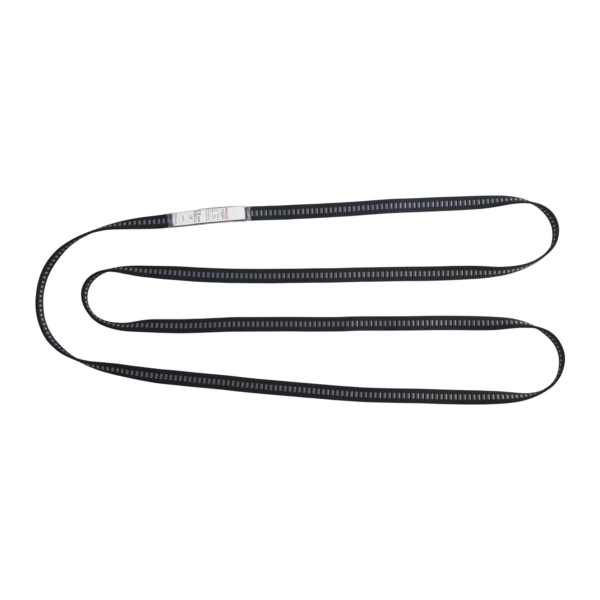Understanding What a Cross Arm Anchor Strap Is
A Cross Arm Anchor Strap is one of the most dependable tools in modern fall protection systems. It serves as a secure connection point between a worker’s harness and a stable anchorage, ensuring maximum safety when working at heights. Typically made from high-strength webbing with reinforced stitching, this strap is designed to withstand intense loads while maintaining flexibility for various applications. It can be looped around beams, pipes, or other structural components, creating a temporary yet reliable anchorage point. What makes it a preferred option among safety professionals is its portability and ease of use—allowing workers to set up secure anchor points quickly in changing work environments. Many models also feature dual D-rings that enable both pass-through and tie-back configurations, ensuring adaptability across different surfaces and structural sizes. For workers in construction, maintenance, and industrial settings, the Cross Arm Anchor Strap offers a simple, cost-effective, and compliant way to reduce fall-related risks.
Key Features That Make Cross Arm Anchor Straps Reliable
Durability and dependability are the hallmarks of a high-quality Cross Arm Anchor Strap. These straps are constructed from abrasion-resistant webbing designed to endure harsh environmental conditions and daily wear on job sites. The reinforced stitching enhances the load-bearing capacity, allowing the strap to handle significant tensile forces without fraying or breaking. Many models incorporate corrosion-resistant D-rings that extend product lifespan even when exposed to moisture or chemicals. Their design also ensures compatibility with a wide range of lanyards, self-retracting lifelines (SRLs), and harnesses. Another valuable feature is their lightweight composition, which enables quick installation and easy repositioning between different anchor points. This flexibility is especially useful in fast-paced environments where workers frequently move between structures. Safety professionals appreciate that these straps meet stringent OSHA and ANSI standards, ensuring confidence in their ability to protect workers at all times.
Types of Cross Arm Anchor Straps and Their Specific Applications
Different job environments demand specific types of Cross Arm Anchor Straps to meet unique safety needs. Standard Cross Arm Straps are ideal for general construction work and maintenance projects that require reliable, temporary anchorage. Wear Pad Cross Arm Straps feature an additional layer of protective material that guards against sharp edges and abrasive surfaces, extending the lifespan of the strap. Heavy-Duty Cross Arm Straps are built for industrial or high-load applications where strength and endurance are critical. Pass-Through Type Straps allow users to easily wrap and secure them around beams or columns, adjusting for the perfect fit and tension. Selecting the right type depends on factors such as project scale, work environment, and surface condition.
Typical applications include:
- Construction sites where beams or pipes serve as temporary anchors
- Tower maintenance and roofing projects requiring portable anchorage
- Industrial plants where equipment access is necessary at elevated levels
- Bridge and infrastructure maintenance for flexible tie-off options
Choosing the correct Cross Arm Anchor Strap ensures consistent performance, compliance, and worker protection regardless of site complexity.
Safety Standards and Compliance Requirements
Compliance is a critical factor in fall protection, and Cross Arm Anchor Straps are built to align with OSHA and ANSI regulations. These standards specify that anchorage points must support at least 5,000 pounds per worker or be designed under the supervision of a qualified engineer. Using approved straps ensures that worksite safety requirements are consistently met. Before each use, workers should conduct inspections to verify that the strap’s webbing, D-rings, and stitching are intact. Regular load testing and documentation can also prevent potential safety violations. Non-compliance not only endangers workers but can lead to severe penalties and liability for employers. By choosing an OSHA-compliant Cross Arm Anchor Strap, companies can maintain a culture of safety, reduce incidents, and foster worker confidence. Compliance also simplifies audits, proving that the organization adheres to the highest safety benchmarks.
Step-by-Step Guide on How to Properly Use a Cross Arm Anchor Strap
Correct installation is key to ensuring the effectiveness of a Cross Arm Anchor Strap. Start by inspecting the worksite and selecting a structural beam, pipe, or column capable of supporting the required load. Wrap the strap securely around the anchorage point, ensuring there are no twists or obstructions. Feed one D-ring through the looped end of the strap if it’s a pass-through model, then pull tight to create a snug and stable fit. Attach the connecting device, such as a lanyard or SRL, to the appropriate D-ring. Always double-check that the connection is secure before moving or applying weight to the system.
Avoid these common mistakes:
- Wrapping the strap around sharp or uneven edges without a wear pad
- Failing to inspect for damage or contamination
- Using the strap on unstable or non-structural materials
Proper installation not only ensures compliance but also enhances the longevity of your fall protection gear and the safety of your entire team.
Maintenance and Inspection Tips for Extended Product Life
Regular maintenance extends the performance and reliability of a Cross Arm Anchor Strap. Before each use, inspect the webbing for cuts, tears, burns, frays, or discoloration. Check D-rings for rust, cracks, or deformation. Any signs of damage should prompt immediate removal from service. After use, clean the strap with mild soap and water—never harsh chemicals—and allow it to air dry. Store it in a cool, dry environment away from direct sunlight or extreme temperatures.
To maintain proper records, implement an inspection log that tracks each strap’s usage, inspection dates, and replacement schedule. Replace straps that show signs of excessive wear or have been subjected to fall arrest forces. Consistent maintenance not only ensures compliance but also protects workers from unseen hazards that can compromise safety.
Common Work Environments Where Cross Arm Anchor Straps Excel
The Cross Arm Anchor Strap proves invaluable across a variety of elevated work environments. Construction sites rely on it for temporary anchor setups on steel beams or scaffolding. Roofing professionals appreciate its portability for quick relocation across roof sections. Industrial facilities use these straps for safe access to elevated machinery during maintenance tasks. Bridge and infrastructure projects require their adaptability to uneven structures. Utility and telecom technicians benefit from their compatibility with poles and platforms.
These straps provide versatility in industries such as:
- General construction
- Energy and utilities
- Telecommunications
- Industrial maintenance
- Infrastructure and transportation
No matter the environment, the Cross Arm Anchor Strap ensures that workers remain securely anchored and compliant with industry safety regulations.
Comparing Cross Arm Anchor Straps with Other Fall Protection Anchors
While there are many anchorage options available, Cross Arm Anchor Straps stand out for their flexibility and cost efficiency. Fixed anchors are permanent and limited to one location, while beam anchors require specific structural designs. The Cross Arm Anchor Strap, however, offers a portable and reusable alternative that adapts to diverse work conditions. It can be quickly installed, removed, and reattached, saving valuable time and labor costs.
Its benefits include:
- Quick setup without tools
- Compatibility with multiple anchor points
- Reusability for multiple projects
- Lightweight design for mobility
Compared to other systems, it provides an ideal balance of strength, compliance, and affordability. For companies seeking efficient fall protection solutions, these straps offer unmatched convenience without compromising safety.
Key Benefits of Investing in a High-Quality Cross Arm Anchor Strap
Investing in a premium-quality Cross Arm Anchor Strap delivers both immediate and long-term safety advantages. Workers gain confidence knowing they are protected by reliable, tested equipment. Installation is fast and simple, minimizing downtime on busy job sites. These straps are engineered to withstand rugged environments, ensuring consistent performance over time. Their adaptability across surfaces and structures enhances efficiency, while their compliance with industry standards ensures peace of mind for employers and safety officers.
Additional benefits include:
- Reduced risk of workplace accidents
- Lower replacement and maintenance costs
- Compatibility with various fall protection components
- Durability under extreme conditions
A well-selected Cross Arm Anchor Strap not only safeguards workers but also supports a company’s commitment to safety excellence.
Choosing the Right Cross Arm Anchor Strap for Your Worksite
Selecting the appropriate Cross Arm Anchor Strap depends on several factors. Evaluate the material’s durability, webbing width, and overall load rating. Consider environmental conditions—such as exposure to chemicals, heat, or moisture—that might affect performance. Length and configuration are equally important for achieving proper anchorage. Reputable manufacturers offer models that meet or exceed OSHA and ANSI standards. For specialized industries like telecom or oil and gas, customized solutions are available for unique work conditions.
When sourcing straps, prioritize suppliers that provide certification, warranty, and clear inspection guidelines. The right choice not only enhances worker safety but also aligns with broader safety management goals, ensuring long-term reliability.
Frequently Asked Questions (FAQ)
Q1: What is the weight limit of a Cross Arm Anchor Strap?
Most Cross Arm Anchor Straps are rated to support at least 5,000 pounds per attached worker, following OSHA requirements.
Q2: Can these straps be used in welding or high-heat environments?
No. High temperatures can weaken the webbing. Specialized heat-resistant straps should be used in such conditions.
Q3: How often should the strap be inspected or replaced?
Inspect before every use and replace immediately if damage is visible or after a fall arrest incident.
Q4: Are Cross Arm Anchor Straps compatible with all types of harnesses?
Yes, as long as the harness and connecting devices meet ANSI and OSHA compatibility requirements.
Q5: Can multiple workers use the same strap at once?
Each Cross Arm Anchor Strap is designed for one worker per anchorage point for optimal safety.
Takeaway
A Cross Arm Anchor Strap is more than just a piece of webbing—it’s a lifeline that ensures safety, compliance, and confidence at elevated worksites. With proper selection, inspection, and maintenance, it becomes an indispensable component of any fall protection system. For safety managers, contractors, and technicians, investing in quality Cross Arm Anchor Straps means protecting lives, preserving productivity, and maintaining the highest standards of occupational safety.








